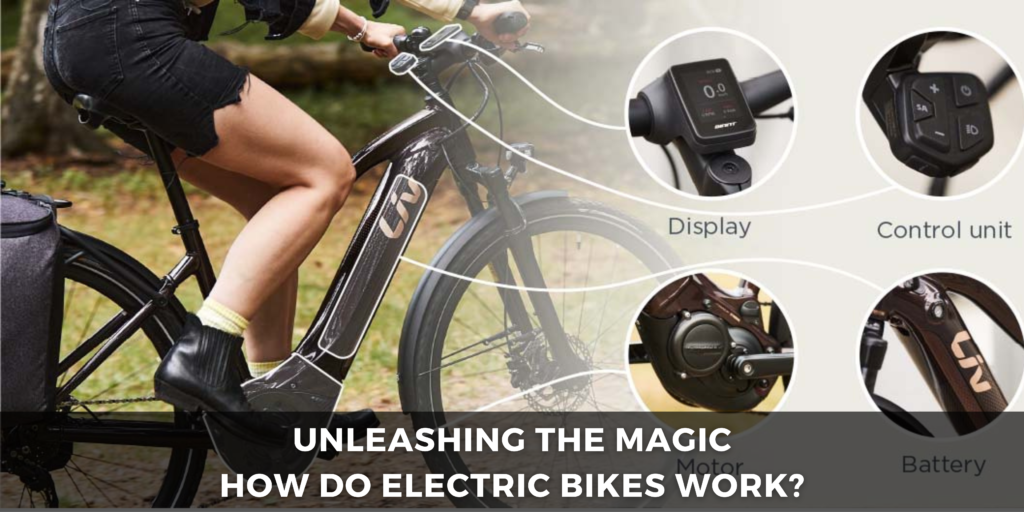
Introduction to How Do Electric Bikes Work
Electric bikes, often called e-bikes, are taking the world by storm. With their eco-friendly credentials, cost-effectiveness, and ease of use, they are rapidly becoming a favourite mode of transportation for riders of all backgrounds. But how do these electric bikes work their magic? In this blog, we will delve into the fascinating world of How do electric bikes work.
The Core Components
To understand how electric bikes work, we must get acquainted with the fundamental components that make them tick. There are three key players:
- Battery: The heart of any e-bike is its battery pack. These are usually lithium-ion batteries; their capacity is measured in watt-hours (Wh). The battery supplies power to the motor, and the size of the battery determines how far and how fast you can ride.
- Motor: The motor converts electrical energy from the battery into mechanical energy, propelling the bike forward. E-bike motors are typically located in the wheel’s hub or within the frame, offering different advantages and disadvantages.
- Controller: This device acts as the brains behind the operation. It manages the power flow from the battery to the motor and allows you to control the motor’s level of assistance.
Pedal Assist vs. Throttle Control
Electric bikes operate in two primary ways:
- Pedal Assist: In this mode, the motor assists as you pedal. The more effort you put into pedalling, the more assistance the motor provides. Pedal assist systems are known for extending the e-bike’s range while still giving you a workout.
- Throttle Control: Throttle-controlled e-bikes, on the other hand, allow you to engage the motor with a simple twist of the throttle, much like a motorcycle. This mode is perfect for those who prefer a more effortless ride.
Regenerative Braking
One of the coolest features of electric bikes is regenerative braking. When you apply the brakes or coast downhill, some e-bikes can recover energy, storing it back in the battery. This innovative technology not only extends your range but also reduces wear and tear on your brakes. This is where protective gear like a Motorcycle Jacket comes into play, ensuring your safety during sudden stops or unexpected situations.
The Role of Sensors
E-bikes are equipped with a variety of sensors to enhance the riding experience. These include:
- Torque Sensor: Measures the force you apply to the pedals and adjusts the motor’s power output accordingly.
- Cadence Sensor: Monitors your pedalling speed and assists you in a way that complements your rhythm.
- Speed Sensor: Ensures that the motor stops assisting once you reach the predetermined speed limit, keeping your ride safe and in compliance with regulations.
Benefits of Electric Bikes
Electric bikes are revolutionizing the way we think about transportation and outdoor activities. They offer numerous advantages, such as:
- Eco-Friendly Commuting: Reduce your carbon footprint and help combat climate change.
- Health and Fitness: Electric bikes can motivate you to exercise and maintain a healthy lifestyle.
- Cost-Efficiency: Save on fuel costs and parking expenses.
- Convenience: Avoid traffic jams and parking hassles, making your daily commute stress-free.
Conclusion to Electric Bikes Work
The world of electric bikes is exciting and filled with innovation and promise. They work by combining cutting-edge technology with a sustainable approach to transportation. Whether you prefer the pedal-assist mode for a workout or throttle control for an effortless ride, e-bikes have something for everyone. Embrace the future of cycling and explore the world with Electric bikes work – the future is now and electrifying!

